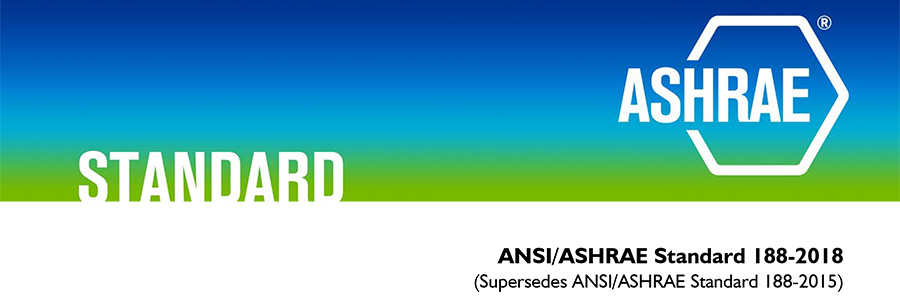Managing Legionella Risk with ANSI/ASHRAE Standard 188-2015
As legionella outbreaks continue to rise throughout the country, plumbers, builders, and facility managers are looking for solutions to manage existing buildings.
A 2017 memorandum from the U.S. Dept. of Health & Human Services’ (HHS) Centers for Medicare & Medicaid Services Division (CMS) directed State Agency Survey Directors to reduce the risk of legionella in healthcare facility water systems.
“CMS expects Medicare-certified healthcare facilities to have water management policies and procedures to reduce the risk of growth and spread of legionella and other opportunistic pathogens in building water systems,” the memo stated.
“The Centers for Medicare & Medicaid Service (CMS) is aware of multiple recent [legionnaires disease] outbreaks in hospitals and long-term care facilities as reported by the CDC, state and local health departments, or investigated by State Survey Agencies (SA),” HHS stated. “Outbreaks generally are linked to environmental reservoirs in large or complex water systems, including those found in healthcare facilities such as hospitals and long-term care facilities.
The good news is that legionella outbreaks are preventable. In fact, investigations by the Centers for Disease Control found that almost all legionella outbreaks were caused by problems preventable with more effective water management.
Among the directives in the HHS memo is for surveyors to verify that facilities “conduct a facility risk assessment…; implement a water management program that considers the ASHRAE industry standard and the CDC toolkit, and includes control measures such as physical controls, temperature management, disinfectant level control, visual inspections, and environmental testing for pathogens; and specify testing protocols and acceptable ranges for control measures, and document the results of testing and corrective actions taken when control limits are not maintained.”
ANSI/ASHRAE Standard 188-2015, Legionellosis: Risk Management for Building Water Systems, establishes minimum requirements for design, commissioning, operation, maintenance, repair, replacement, and expansion of new and existing buildings concerning their associated potable and non-potable water systems and components. It is predominantly intended for owners, managers, and designers of building water systems.
The standard applies to “human occupied buildings” excluding single-family residences, including buildings containing cooling towers or evaporative condensers, whirlpool spas, ornamental fountains, or other non-potable water systems or devices that release water droplets into the air. It also applies to projects meeting any of the following criteria: multiple housing units with one or more centralized potable hot water-heater systems, more than 10 stories, buildings designated primarily for occupants over age 65, healthcare facilities where a patient stays longer than 24 hours, or a building with one or more areas designated for housing or treating people at a high risk of contracting Legionnaire’s disease.
Project designers meeting ANSI/ASHRAE 188-2015 must identify hazardous conditions, including diagrams for monitoring and control of the water system and its components.
Designers must provide final installation documents, including monitoring points for confirming proper design temperatures, and safety data sheets for materials used. Finally, they must define detailed instructions for commissioning all systems, including procedures for flushing and disinfection.
For facility managers, the following control methods are recommended:
- Maintain hot water storage above 140 degrees F
- Maintain disinfectant residual throughout water system with supplemental disinfection treatment of chlorine, chloramines, chlorine dioxide, or copper silver ions
Where decontamination is necessary, the following counteractive treatments are suggested:
- Chemical Shock using elevated concentrations of chlorine or chlorine dioxide for a period of time
- Thermal Shock maintaining elevated temperatures at the outlets while flushing for a period of time (Note: The ASHRAE Guideline is in process of being revised and not finalized at the time of this writing. Thermal Shock is Highly Cautioned and the final wording for proper recommendation has not been determined.)
Ready to learn more about legionella and your piping systems? Download our webinar and contact your Corzan representative.

